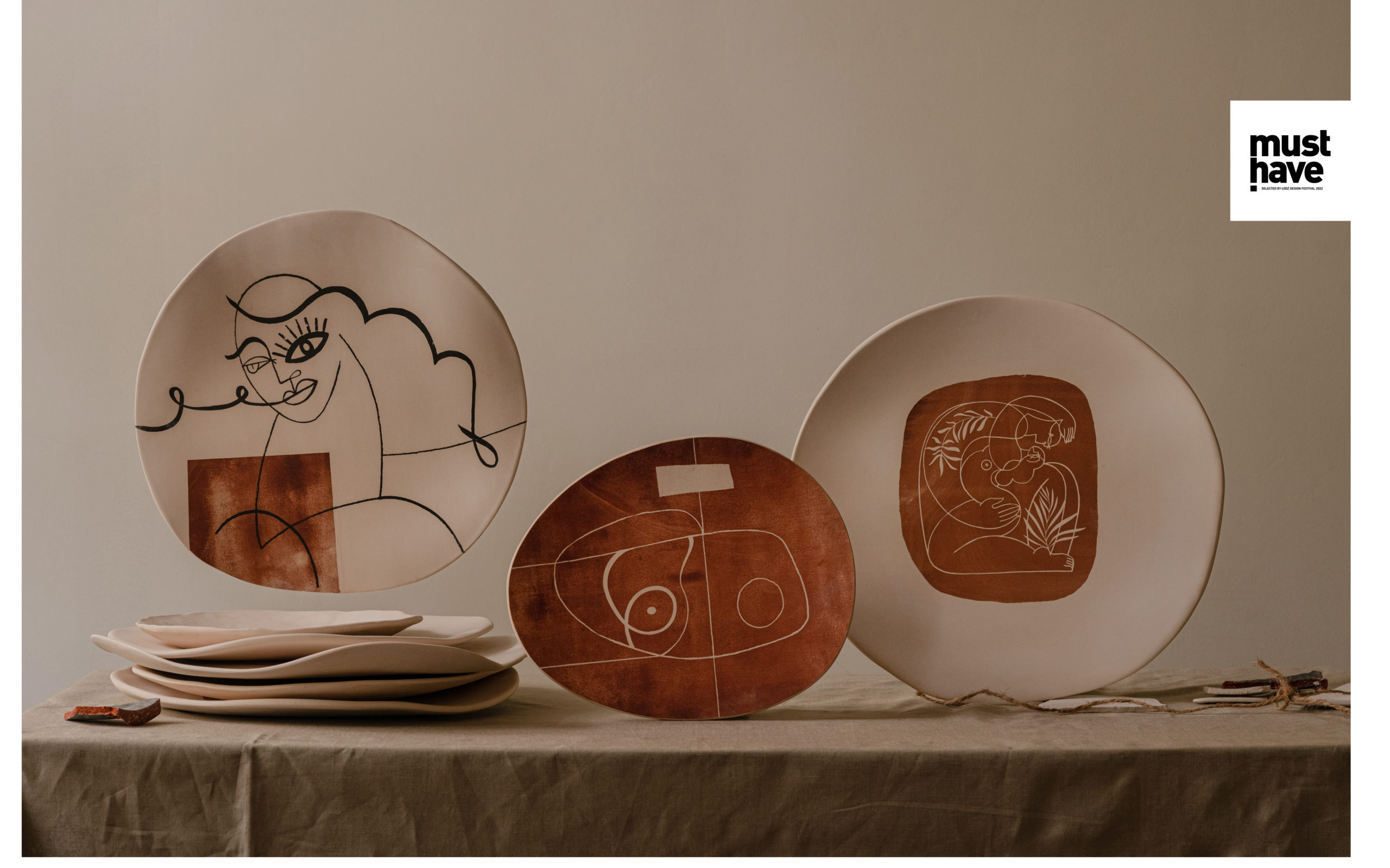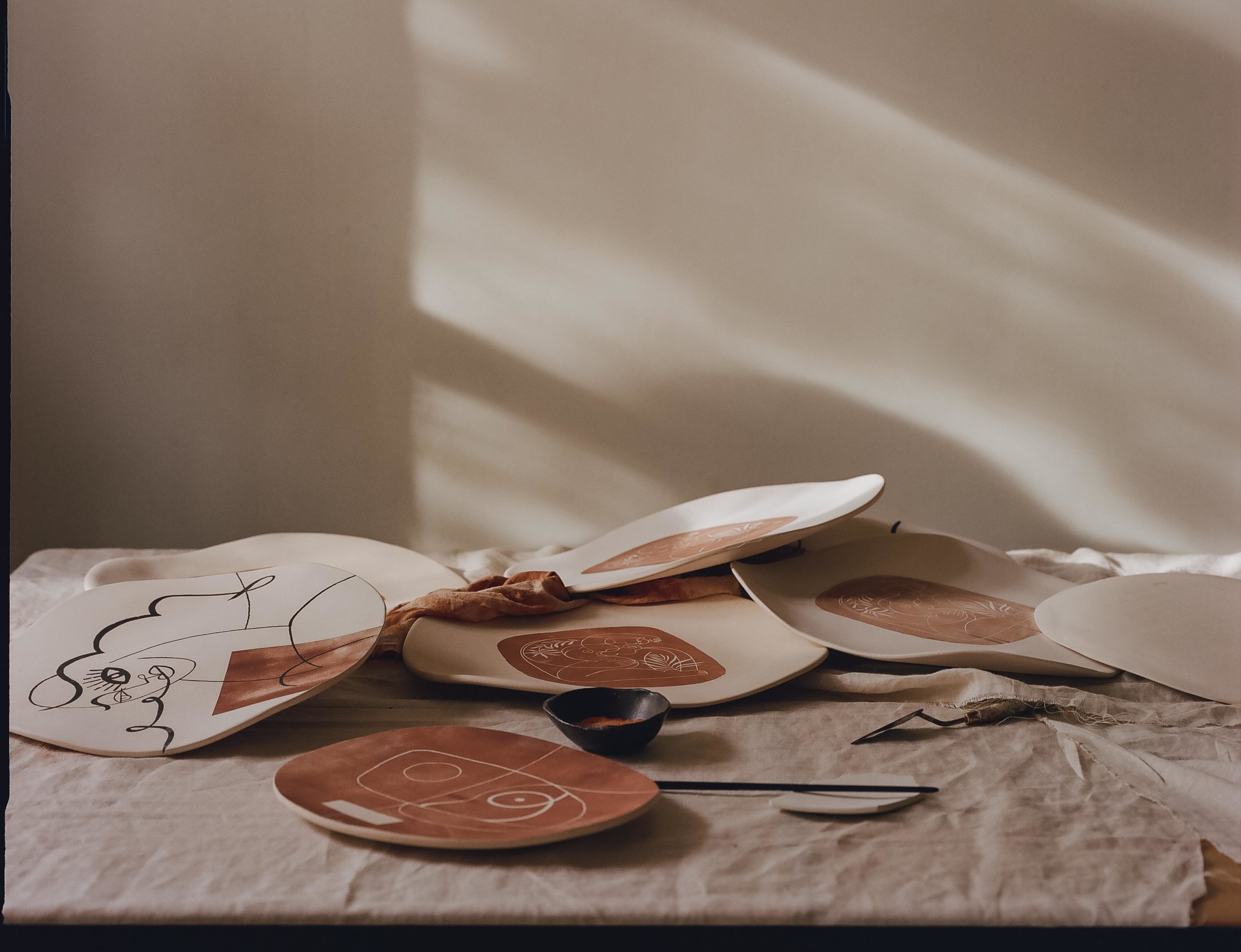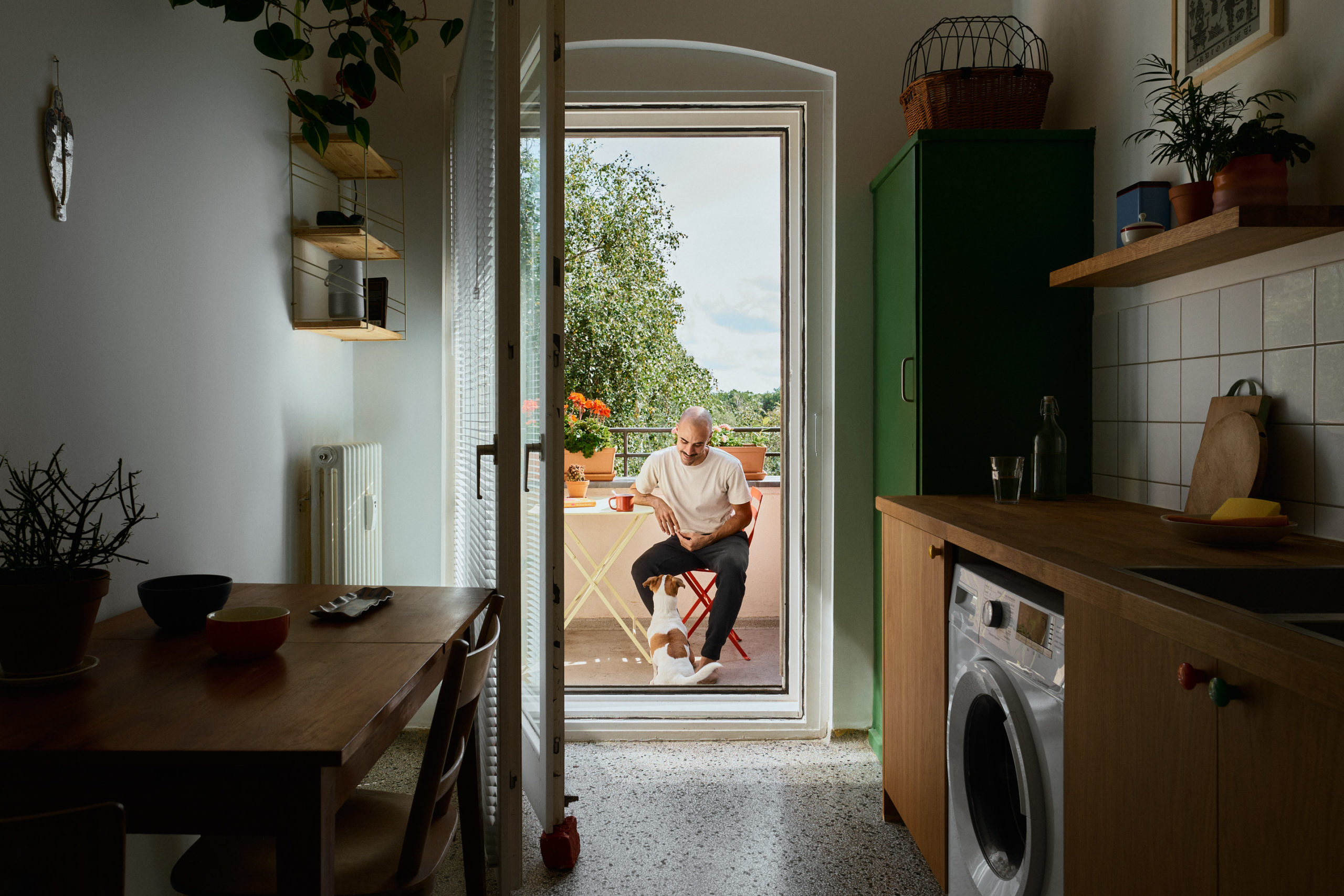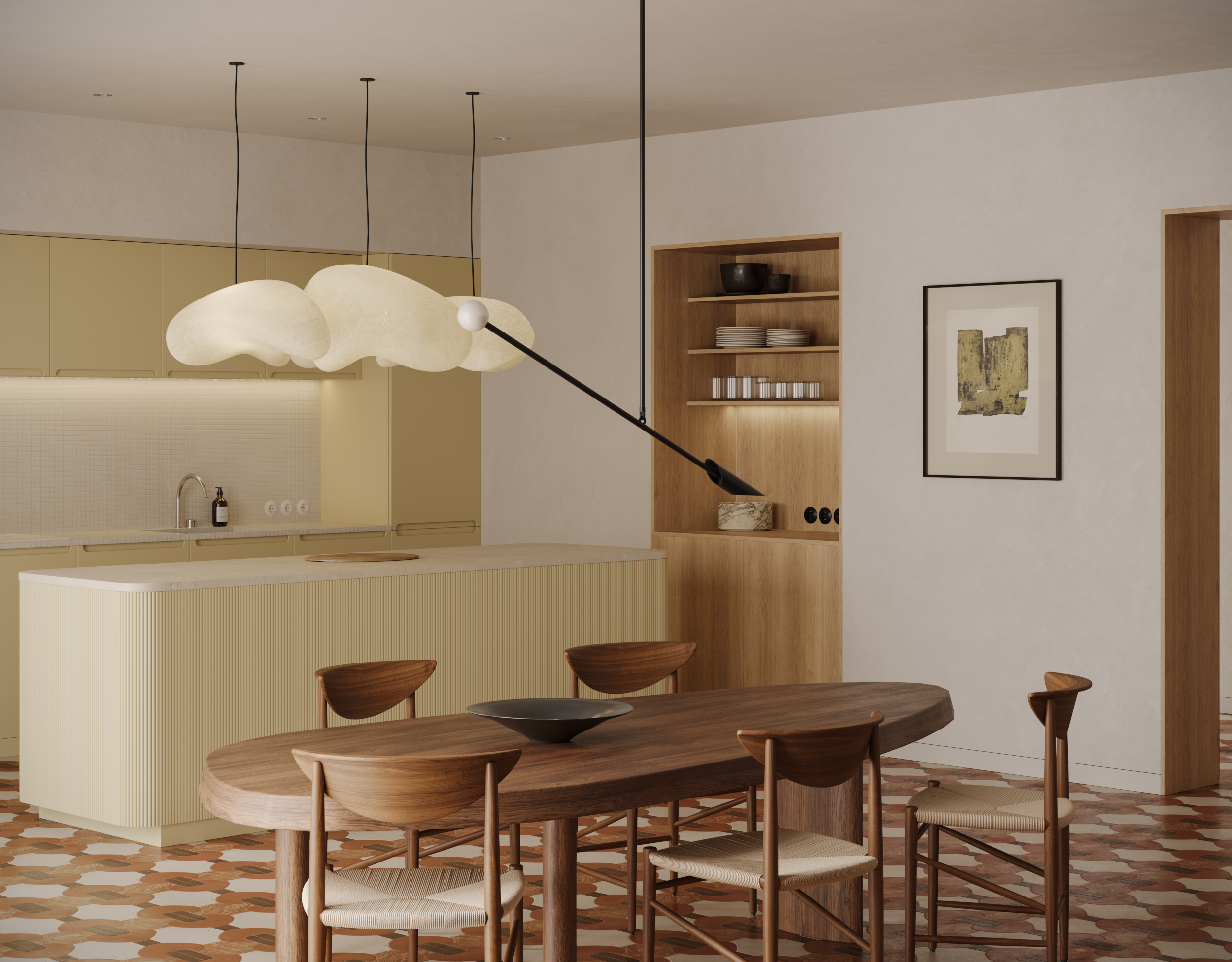Limited Collection Of FRØPT Wall Ceramics x Nogalska: Simple Stories
The limited collection of wall ceramics is our joint project with the illustrator and designer Ania Nogalska. As a result, 30 unique objects were created, differing in shape, curves, and tonality of the graphics. 3 illustrations transferred to the form of organic plates tell their sensual stories with the spotlight focused on the woman.
Read the interview, from which you will learn, among others: how the idea for wall ceramics was born, why we decided on a limited collection, and what the process of making plates looks like.

We approached you with a proposal to do a joint project related to ceramics because we knew that you were already experimenting in this field. We liked the idea of the wall plates very much, it suited our way of thinking about the brand, we were also convinced that our cooperation could result in something cool. But let’s start from the beginning. Why did you start transferring your illustrations to ceramics?
I like to work at the meeting point of applied art and pattern-designing, such flexibility and smooth transitions between different disciplines and different workshops are liberating and inspiring. For some time now I have been looking for a new medium for drawings and illustrations which are my key interests. I wanted to treat clay as a spatial canvas. The idea of using ceramics has been sprouting in my head for several years now, and while working on sessions, set designing, and scenography, this idea began to crystallize. Very often I look at the space as a picture. The idea for ceramic objects and their shape were created during such observations and supplementing the frame.
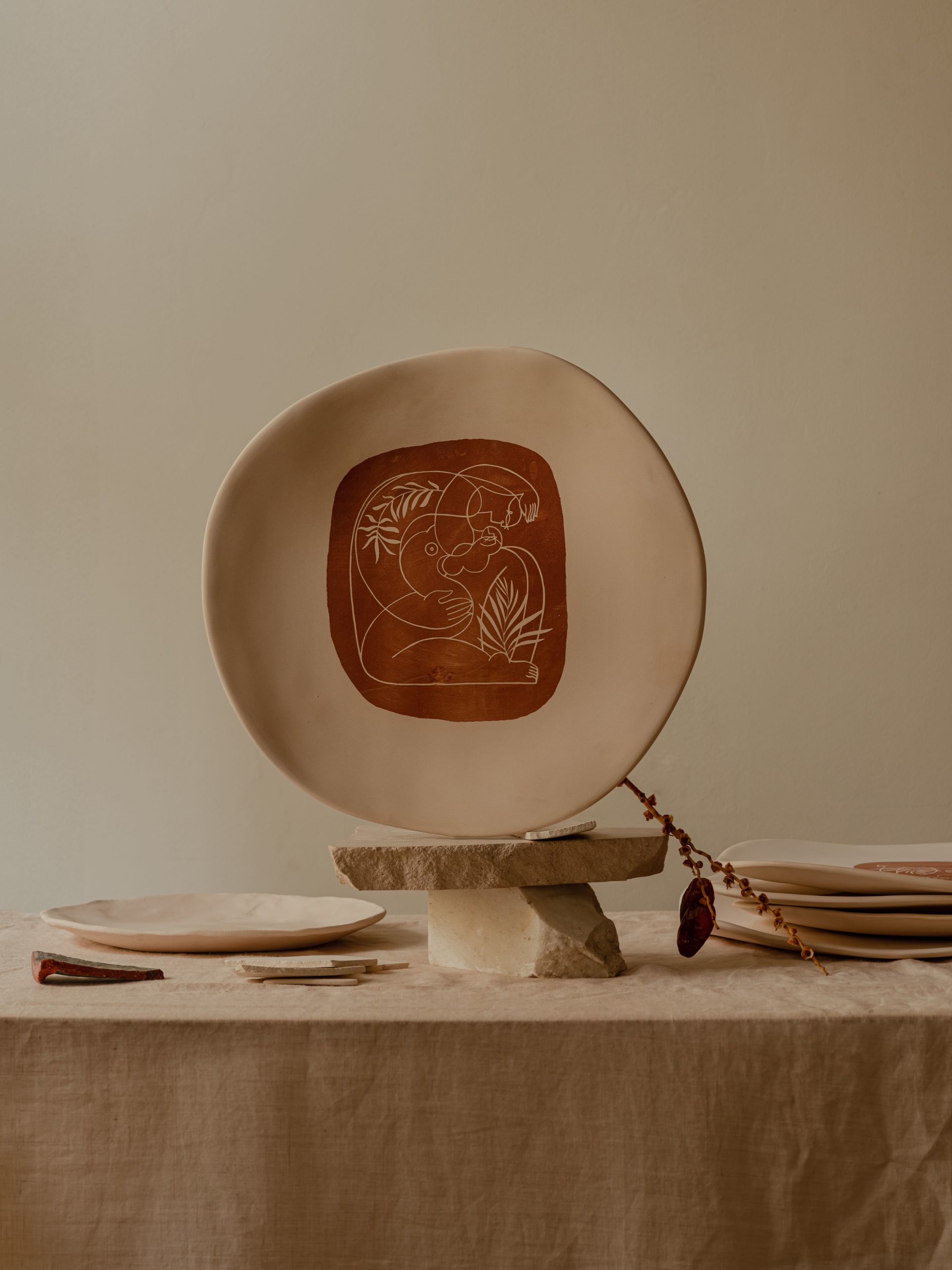
Where did the idea for the form of plates come from?
While preparing patterns for my collection, I was looking for an organic form for them. I have a soft spot for traditional pattern designing. And the painted plates hung on the wall are a piece of the history of artistic handicrafts. In my opinion, this is a field for further exploration for designers. My great love for painted ceramics from the Maduro and Picasso studio is also important. In my case, the plate became the starting point.
During the first talks about our joint ceramics collection, we decided that there would be 3 unglazed plates, each numbered and signed, available in 10 pieces. We left the rest to you. Was the topic of illustrations clear to you from the beginning?
For me, the most important thing is always the concept, graphics, and drawing. I have been consistent in the selection of the topic from the beginning of my path. I like drawing women, they have an amazing organic sculptural potential. I often touch on sensuality. As much as I can, I smuggle body and sensual themes, picking up seemingly simple stories that have deep meaning. I have a radar set up for any awkwardness, broken hearts, dirty thoughts, this is my ecosystem, there I feel like a fish in the water. I thought of this series as a book of slightly sensual poetry. Each of the graphics on the plates is immersed in its isolated space. Despite this, they maintain visual coherence, function separately and together.
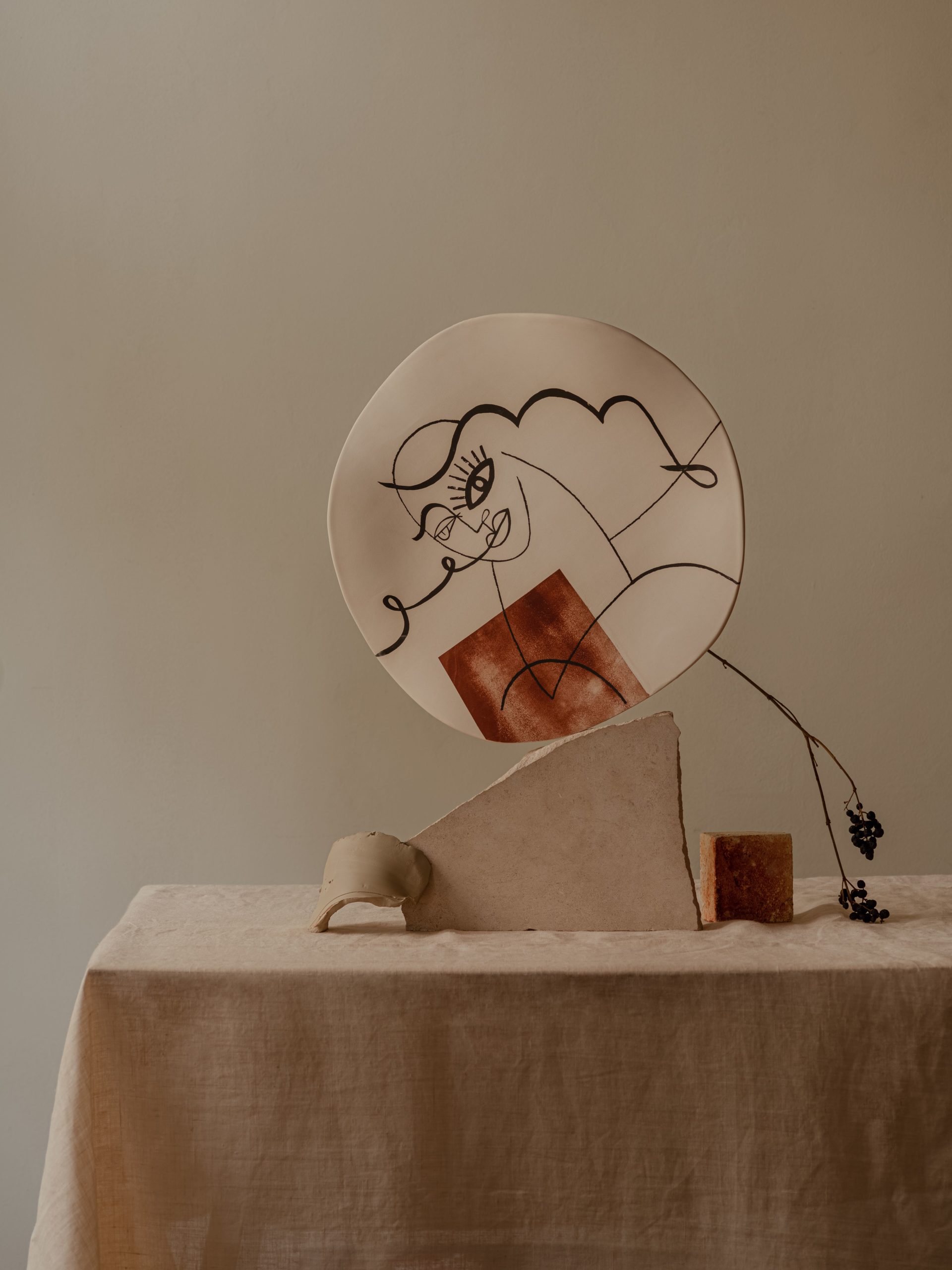
The plates come in different shapes and curves. What is the process of applying graphics to the plates?
Designing graphics or illustrations for ceramics is actually no different from drawing. It all starts with a paper, pencil, and looking for form. Ceramics required a more synthetic approach to drawing. Less history, more condensed means of expression. Simplifying the form and synthesizing the drawing took place very naturally because I was working on other plates in parallel for my project, so the whole process of transferring the thinking about drawing evolved smoothly.
From the very beginning, you are responsible for making the plates, from the creative concept to active participation in the production process. What was the biggest challenge for you in this project?
The entire implementation process took place during pandemic isolation, with closed studios. I prepared forms in my home space, rolled out clay, and applied graphics. I was literally covered in plates and grinding dust, watching and keeping an eye on them. I had the impression that I was taking part in secret classes and only my strong determination allowed me to continue the process. Fortunately, I already was initially familiarized with the topic, my first experiences and first firings were behind me, so I could feel the direction in which I was going. I knew that I cared about the tonality and texture of the graphics, I also knew that I wanted to achieve the effect of workshop graphics, which is particularly close to my heart. I was convinced that the whole thing was to be raw and unglazed, natural, like objects washed up on the shore. The rest is intuition.
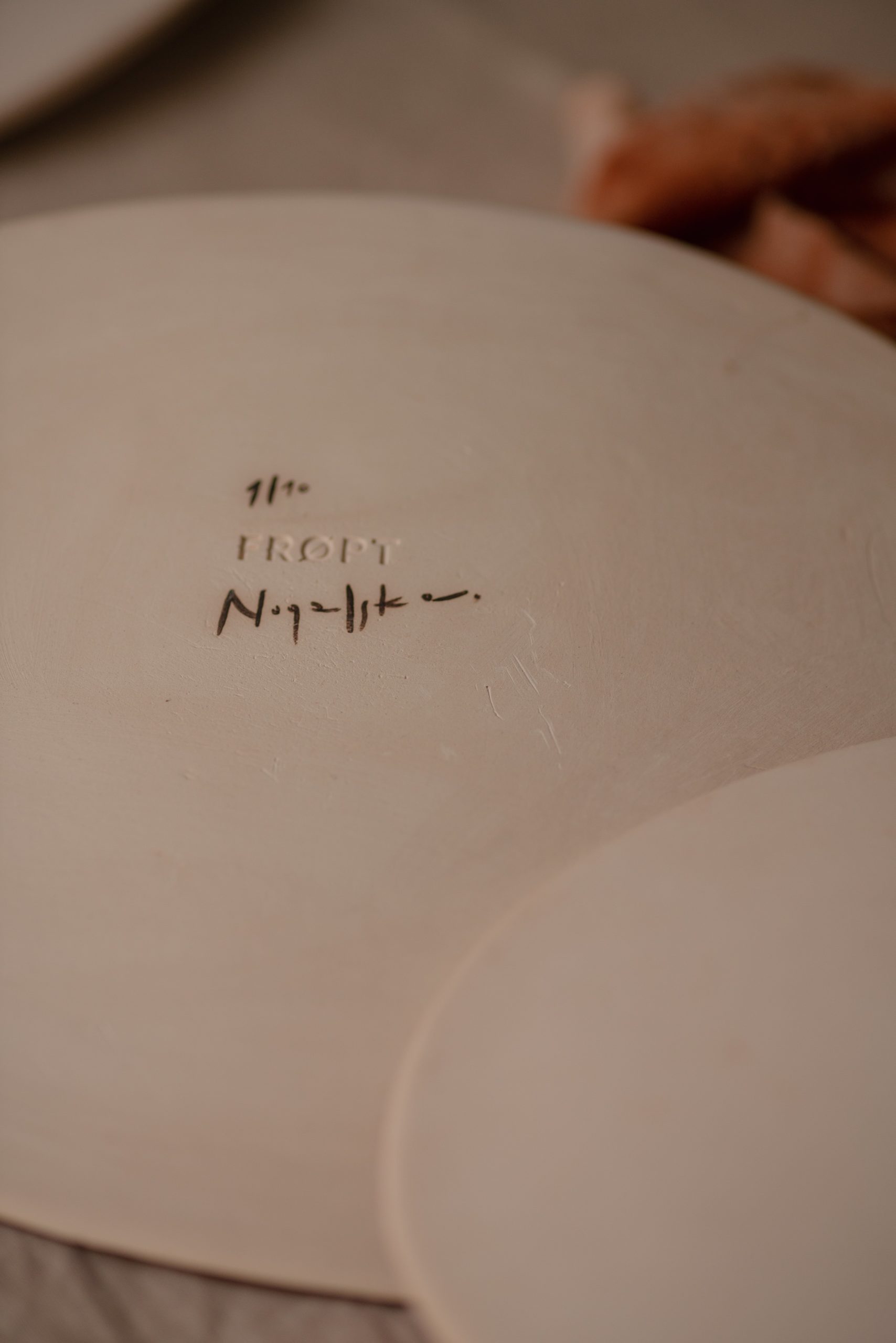
We decided on the limited edition because each plate is hand-formed and illustrated by you. As a result, 30 unique objects were created. Tell me, what does the process of their production look like?
The plates are made in a small Warsaw studio during double firing process. Graphics and drawings are applied to wet clay, so I have to work with my imagination and predict the effect. At this stage, I work the most on the matter, I mean I paint, wipe, work on texture and distribution of the engobe, and give the clay a form. Thanks to this, each of the objects has a different shape and bend, its tonality, abrasions in the graphics, and a different dilution of water and pehatine stains. It’s a lot of fun to know that each copy can only appear once. It has a fingerprint trace and it collects my mood of the day. It’s a beautiful feeling – very natural from start to finish, totally sensual and haptic. After the first bisque firing, the time begins which in my opinion is a great pleasure, it’s a caressing, sensitive grinding. It is still long and demanding physical work, but the head is definitely in heaven. The next firing is waiting for the finale and for the appropriate colour saturation and tinting. With favorable winds, of course.
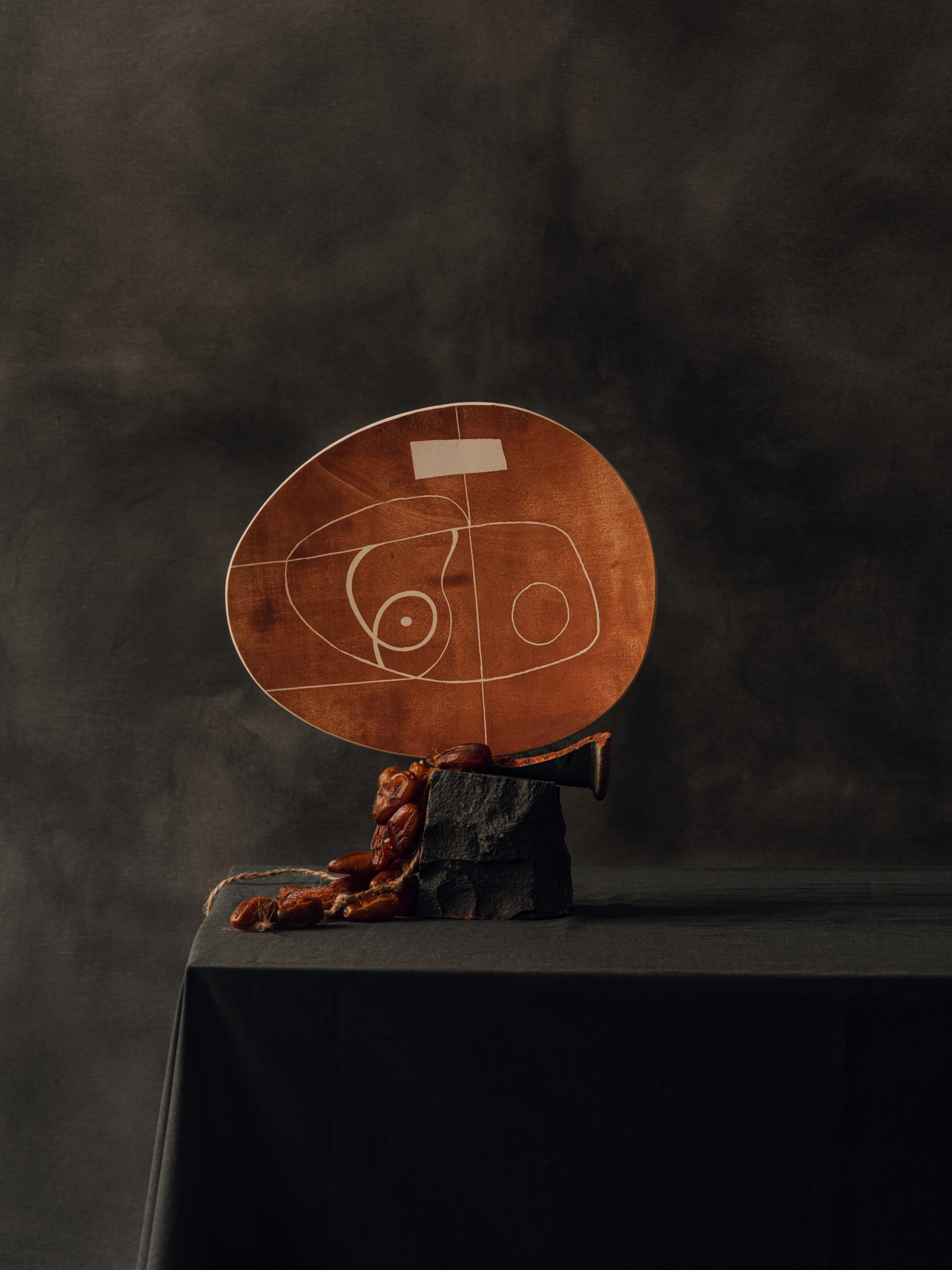
You put the graphics on the plates by screen printing. Why did you choose this technique?
I wanted to achieve the natural character of ceramics, as well as the effect of workshop graphics on ceramics. I wanted clay to feel a bit of old raw Japanese stained argil and engobe dishes, but with a contemporary approach to drawing. It was important for me to control the drawing, its concise form without thick rustic brush marks – matrix, organic form. The screen printing turned out to be the closest to my intentions. This is an old technique that has its roots in Japan. It was initially used for dyeing kimonos with silk threads stretched over a frame. It has come a long way, often used in art, today it is simplified and professionalized. Screen printing is familiar to me, the screen printing studio was the place of my specialization at the Academy in Gdańsk. It gives the opportunity of controlling the material and drawing, a controlled coincidence, which in my opinion was necessary for this concept and work in clay. I was able to focus on finding a structure and texture in colour without losing the drawing, on appropriate tonal transitions, watercolour blur, and rough stone texture.
We know that you put a lot of heart into this project, what emotions do the plates carry?
They gather a lot of emotions, but if I had to distill the most important ones, they would be passion, ardour and love. Each plate brings together, like in the lens, a small fragment of my life, which I send out to the world and wish you a good meal. The whole process of creation is alchemy from behind the scenes, in which melancholy, tough nuts to crack and disappearing moments intertwine. Simple stories with a spotlight focused on the woman.
Anna Nogalska
A girl from the Tri-City. A graduate of the Faculty of Painting and Graphics at the Academy of Fine Arts in Gdańsk. Illustrator, designer, and poster artist. She operates at the interface of applied arts and pattern-designing and is not limited to one medium. She draws, paints, photographs, and cuts out paper, collects old papers, seemingly impossible stories, drawings for adults, and beautiful stones.
Ania Nogalska – https://www.instagram.com/_nogalska/
Study closer the collection –
The limited collection of wall ceramics was awarded in 2022 by the must have a quality mark at the Łódź Design Festival in Poland.
